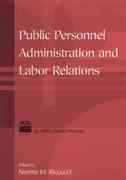2. Use the specificfactors model to answer question 2. Assume that there are two industries, food and cloth. The food industry uses labor and land as inputs while the cloth industry uses labor and capital as inputs. The marginal product of labor in both industries is as follows: Labor 0 (DmemuthMH Marginal Product of Labor Cloth Food 1.6 1.5 1.4 1.4 1.2 1.3 1 1.2 .8 1.1 .6 1 .4 9 .2 8 0 7 Assume that initially that there is no trade and that the price of food and the price of cloth are both equal to 1. Assume that the total size of the labor force is equal to 8. a. Graph the labor demand curves (price*marginal product of labor) for the food and cloth industries in a box diagram, with the labor demand curve for the cloth industry going from left to right and the labor demand for the food industry going from right to left. The wage of the cloth industry (price*marginal product of labor) is on the vertical left axis and the wage of the food industry is on the vertical right axis. Use the same framework as figure 34 of the textbook. Graph accurately using either graph paper, software or the template at the end of the homework. Please note that if you use the latter, you will need to draw a right side vertical axis and draw the correct size of the horizontal side of the box. Note: Use the NFL values as given above. You do not need take midpoints at the labor quantities. Be sure to label all curves and axes of your graph. Use your graph to answer questions b c. Write your answers in the table at the end of the problem. b. What is the equilibrium wage rate? How much labor will be hired by the food industry and how much by the cloth industry? What is the amount of income earned by landowners? What is the amount of income earned. by capital owners? (Hint: remember that the area underneath the marginal product of labor curve is equal to output.) Suppose that international trade causes the price of cloth to double (from 1 to 2), while the price of food remains the same. Show the effect that this will have on your graph in part a. Use your graph to answer the remaining questions. Write your answers in the table at the end of the problem. d. What is the new equilibrium wage rate in dollar terms (w)? How much labor is hired by the food industry and how much by the cloth industry? e. What has happened to the purchasing power of the wage in terms of cloth (i.e what has happened to w/PC)? What has happened to the purchasing power of the wage in terms of food (i.e what has happened to w/Ps)? f. What is the amount of income to landowners now, both in dollar terms, and in the amount of cloth and food it can buy (income/PC and income/Pp)? g. What has happened to the income to capital owners, both in dollar terms, and in the amount of cloth and food it can buy? Before Trade After Trade (PC 1) (Pc = 2) (PF 1) (PF = l) l1 || W/PC W/PF RK/Pc RK/PF RT/Pc RT/PF








